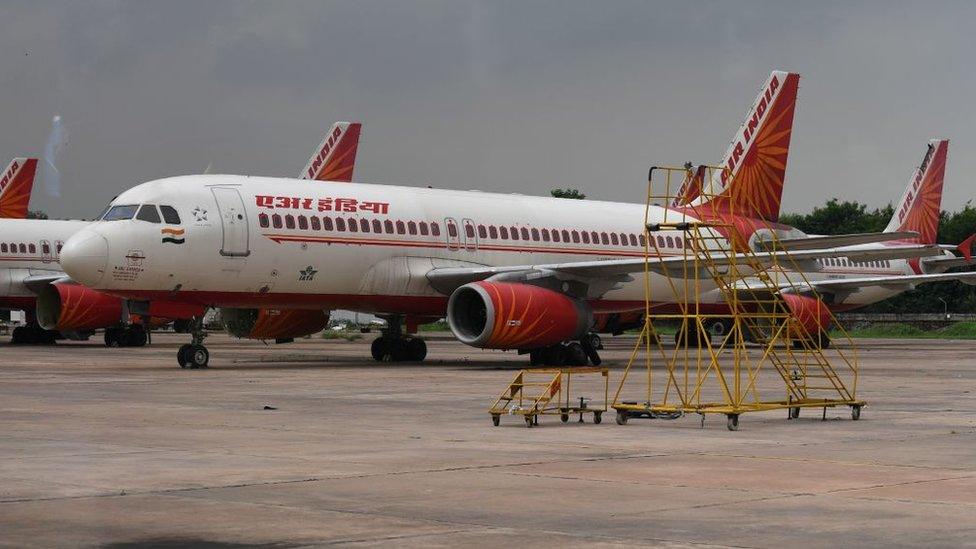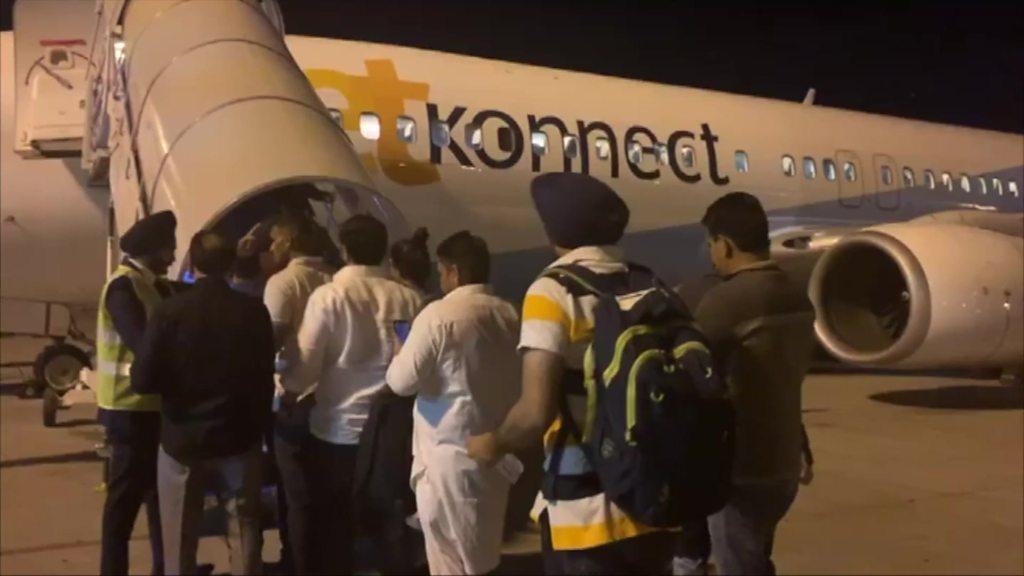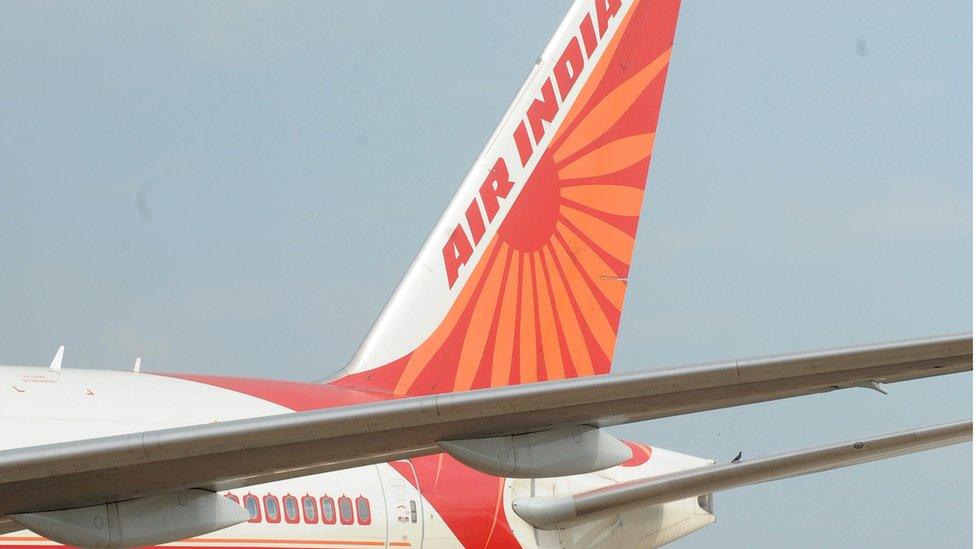Jet Airways: India's aviation boom runs into turbulence
- Published
Taking the last flight of India's stricken Jet Airways
On the face of it, India's airline industry is flying high - the country is the fastest growing major aviation market in the world.
The airports are bursting at the seams: 138 million passengers flew last year, up from 51 million in 2010. International traffic has burgeoned. On-time performance has improved.
Not surprisingly, the future looks rosy. More than 600 planes are in service and another 859 are on order. The country is poised to become the world's third largest aviation market by 2020, and the largest by 2030, according to consulting firm KPMG.
All this, however, masks the turbulence within.
The latest evidence came on Wednesday when Jet Airways, India's oldest private airline, temporarily suspended its operations after failing to find fresh funding. The airline used to fly 115 planes on nearly 1,000 domestic and international routes. Although Jet had lost its position as the domestic leader to low cost carrier Indigo, it commanded a leading 12% share of the international market.

The debt-stricken Jet Airways has more than 16,000 employees
Yet the airline was drowning in more than a billion dollars of debt and bleeding badly. Last year's rise in fuel prices and depreciation of the rupee had increased costs. The partnership with Abu Dhabi-based Etihad Airways, which had picked up a 24% stake in the airline, was fraying. Despite having a valuable frequent flyer programme, prime airport slots, and owning more than a dozen planes, the airline sank. "The fiasco was waiting to happen," an aviation consultant, who preferred to remain unnamed, told me.
In the short term, the Jet shutdown will hurt consumers. With 20% of India's fleet suddenly out of service, air fares - especially international - will soar. Domestic fares will rise and passenger traffic will decline if the surviving carriers are not able to bring more planes. Vendors, airports, oil companies, lessors and lenders will be hit. Foreign lenders will be wary of investing in the industry. "There's negative growth ahead," says Bhavesh Agarwal, an aviation consultant.
Something is clearly amiss in India's indisputable aviation boom story. A dozen airlines have folded since 1981. Business tycoon Vijay Mallya's sparkly Kingfisher Airlines made annual losses for five years in a row and collapsed in 2013 after lenders refused to give it fresh loans. Plans to sell state-run Air India, saddled with some $8bn of debt and now run on taxpayers money, were abandoned last year after it found no buyers.
At the heart of this crisis, say analysts, is a structural problem within India's aviation industry.

Air India, India's oldest running commercial airline, has failed to find buyers
The business is run on razor thin margins. High taxes, volatile aviation fuel prices and creaking infrastructure raise costs. But fares are low, and airlines compete to fill seats at the expense of profits. Airlines also place fat orders for planes, punting on further growth. Only one private airline, say insiders, has enough cash to fund expansion and service debt. "It is profitless growth. It is the survival of the fittest," says Mr Agarwal.
Critics say there is a "toxic environment" for commercial aviation in India. Airports are stretched because of the surge in passenger traffic. Air traffic control in main airports are understaffed and overworked. An international aviation safety audit found India was one of the lowest ranked countries when it came to air safety, external. The aviation regulator, they say, is a technical body, but "ends up asking the airlines not to increase fares". Airports are run by a handful of private players, sparking allegations of cronyism. "Apart from the airlines, there's no real competition in the airline ecosystem," says Mr Agarwal.
Clearly, Indian aviation needs a root and branch reform to help make it truly sustainable.

Read more from Soutik Biswas

Follow Soutik at @soutikBBC, external
- Published18 April 2019

- Published29 March 2018
